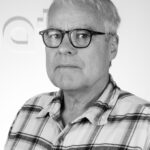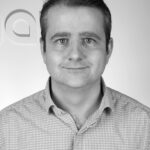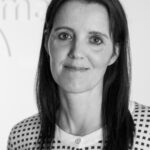Skýrsla þessi er greining á stöðu innlendrar þekkingar varðandi sveppaeiturefni (e. mycotoxins) í matvælum á Íslandi, sérstaklega korni. Sveppaeiturefni eru eiturefni sem myndast í sumum tegundum sveppa og eru alvarleg ógn við matvælaöryggi (e. food safety) vegna slæmra áhrifa á heilsu fólks. Sveppaeiturefni geta skaðað dýr og dregið úr afurðum í búfjárrækt.
Mjög takmörkuð gögn eru til um sveppaeiturefni í innlendu korni. Oftast sýna niðurstöður að engin eða fá sveppaeiturefni eru mælanleg í innlenda korninu. Sveppaeiturefni hafa mælst við eftirlit með innfluttu fóðri, yfirleitt í mjög litlu magni ef þau hafa greinst. Lagt hefur verið mat á sveppaeiturefni í fæðu Íslendinga með mælingum á þvagi. Í ljós kom að Íslendingar voru útsettir fyrir sveppaeiturefnum í samræmi við niðurstöður frá öðrum Evrópulöndum en gildi fyrir eitt efnið var þó lægra fyrir Ísland en hin löndin.
Vænta má veðurfarsbreytinga á Íslandi á komandi árum. Í kjölfar slíkra breytinga er viðbúið að breytingar verði á vexti sveppa í kornökrum og mögulegri myndun sveppaeiturefna. Einnig skiptir máli að stefnt er að aukinni kornrækt á Íslandi. Í ljósi þessa er mjög mikilvægt að rannsóknir fari fram á myndun sveppaeiturefna við íslenskar aðstæður til að tryggja öryggi kornsins bæði fyrir búfé og til manneldis.
Upplýsingar skortir um áhrif umhverfisaðstæðna á myndun sveppaeiturefna á Íslandi. Þörf er á að rannsaka samsetningu sveppaflórunnar í korni á akri og í geymslum. Leiða þarf í ljós hvaða áhrif íslenskar umhverfisaðstæður hafa á myndun þessara efna. Með þekkingu af þessu tagi verður hægt að beita sveppavarnarefnum (e. fungicides) markvisst og forðast óþarfa notkun þeirra.
Eftirlit með sveppaeiturefnum er enn of takmarkað á Íslandi. Nú þegar ætti að taka upp árlegt eftirlit með sveppaeiturefnum í innlendu og innfluttu korni í ljósi aukinnar áherslu á kornframleiðslu innanlands.
____
This report is an analysis of the current state of domestic knowledge regarding mycotoxins in food in Iceland, particularly in cereals. Mycotoxins are toxic compounds produced by certain fungi and represent a serious threat to food safety due to their harmful effects on human health. Mycotoxins can also harm animals and reduce productivity in livestock production.
Very limited data are available on mycotoxins in domestic cereals. Most results indicate that no, or only few, mycotoxins are detectable in Icelandic grain. Mycotoxins have been detected during monitoring of imported feed, usually at very low levels if present. Human exposure to mycotoxins in Iceland has been assessed through measurements in urine. The results showed that Icelanders were exposed to mycotoxins at levels comparable to findings in other European countries, although values for one mycotoxin were lower in Iceland than elsewhere.
Climatic changes are expected in Iceland in the coming years. Such changes are likely to affect fungal growth in cereal fields and the potential formation of mycotoxins. Moreover, plans exist to increase cereal cultivation in Iceland. In light of this, it is of great importance to conduct research on the formation of mycotoxins under Icelandic conditions in order to ensure the safety of cereals, both for livestock feed and human consumption.
Information is lacking on the impact of environmental conditions on mycotoxin formation in Iceland. Research is needed on the composition of fungal communities in cereals in the field and during storage. It is also essential to determine how Icelandic environmental conditions influence the formation of these compounds. Such knowledge would enable the targeted use of fungicides and help to avoid unnecessary applications.
Monitoring of mycotoxins in Iceland is still too limited. Annual monitoring of mycotoxins in cereals should already be implemented, given the increasing emphasis on domestic cereal production.









